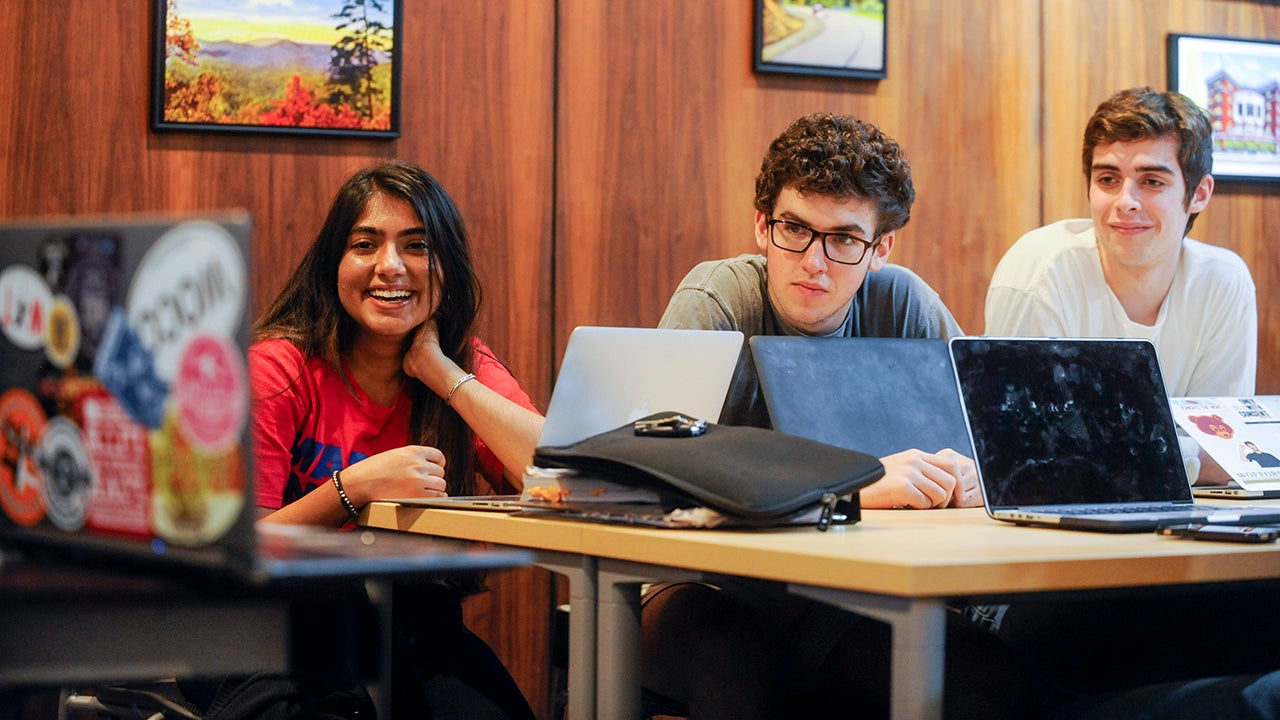Sometimes the best way to learn about a person is to tackle a problem with them. Upsize that insight to international scale, and you’ve got one of the big ideas behind virtual exchange—a tech-assisted program that brings together young people from across the globe to learn and solve problems (virtually) side-by-side.
The Aspen Institute’s Stevens Initiative, created in 2015 as a tribute to Ambassador J. Christopher Stevens, has seen how successful these programs can be. The Initiative invests in virtual exchange programs, shares research and resources, and advocates for broader adoption of this powerful tool.
With help from the Bezos Family Foundation, the Stevens Initiative recently expanded its reach—formerly the United States and the Middle East and North Africa—to include Ukrainian and Mexican youth. One of the programs that went live paired classrooms in South Carolina, US and Jalisco, Mexico, in a program called the “Coding with Empathy Challenge.” The program, developed by the nonprofit Empatico in partnership with Code.org, uses virtual exchange and coding activities to help high school students address global issues in inclusive and compassionate ways, all while exploring the importance of fostering diversity and inclusion in science, technology, engineering, and math. It’s “Learn to code” wrapped in a vehicle to promote global understanding.
The activities are guided by instructors in the classrooms—in this case, Kirstin Bullington of Richland Two Institute of Innovation in Columbia, South Carolina, and Patricia Tejeda Montero of CONALEP Zapopan in Zapopan, Jalisco. The two spoke about their experiences, fittingly, in a virtual Q&A last month.
Language, in most cases, is the first barrier to be overcome during virtual exchange. “When people don´t have the same language it’s difficult to have a real communication,” says Tejeda Montero. “To overcome it we need to think about the necessities involved in the message.” She encouraged her students—who made practicing their English a priority—to focus on the problems they were trying to solve with their American counterparts, and that helped focus their communication.
“The students in Guadalajara were gracious about mainly speaking in English,” says Bullington. “I think the larger barrier was shyness on both sides; it took one or two sessions to have the students overcome their worry about what the other school would think.” But a little bit of peer pressure helped. “You want to show your best self,” she says of her students, “so you work a little harder on your projects.”
There were cultural barriers as well—though often of an imaginary sort. “They thought that students from another country didn’t have hobbies or interests like they have,” says Tejeda Montero. They were surprised to find that their counterparts eat, play, and enjoy the same things they do. They also found that they cared about similar problems.
“I loved watching my students recognize the similarities and differences between themselves and their colleagues in Guadalajara,” says Bullington, “especially in the desire to take action to solve problems they identified in their communities.”
Both teachers consider the virtual exchange a success, increasing student engagement and aptitude for the STEM skills being taught. “This kind of interaction with other students is a benefit that helps students to grow in a professional and personal way,” says Tejeda Montero, who notes that this is about more than just two classrooms of students. “The benefit for society is developing people who care and try to solve problems—and teenagers who understand that humans are the same around the world, no matter their skin color or nationality.”


